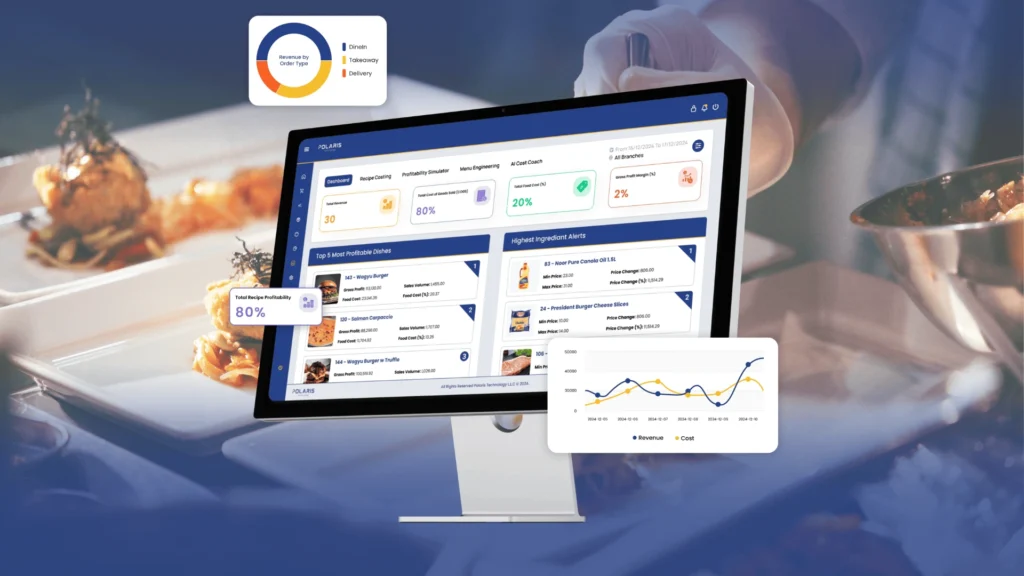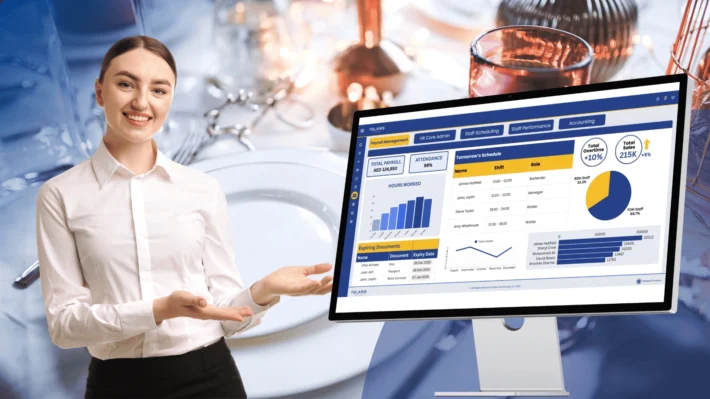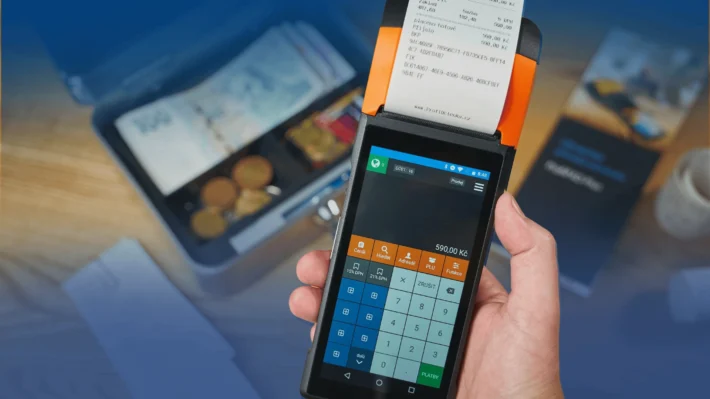How can an AI-powered food cost calculator boost restaurants’ profitability?

Introduction:
Running a successful restaurant requires careful management of costs and profits. However, keeping track of ingredient prices, menu performance, and food waste costs can be overwhelming. This is where an AI-powered food cost calculator becomes a valuable tool for restaurants and F&B businesses. By using AI to analyze operational data, restaurant managers have their personal consultant at their disposal, providing them smart insights to make informed decisions fast.
From helping set the right prices to reducing waste and removing non-profitable items, this tool simplifies operations and boosts profitability. In this article, we will explore how an AI-powered food cost calculator can transform a restaurant’s performance, optimize the menu, and ensure sustainable growth.
What is an AI-Powered Food Cost Calculator?
A food cost calculator is a tool that helps restaurants and other F&B businesses reach the ideal food cost by managing costs and optimizing profitability. Polaris ERP’s food cost calculator uses AI to collect data on ingredients, prices, and sales, providing powerful insights to restaurant managers regarding best sellers, slow sellers, or menu items that have high profitability margins but are not very popular. With insights like these and many more, they can make informed decisions about menu pricing and other updates.
Being directly connected with the inventory system into Polaris ERP’s software, the AI-powered food cost calculator also helps to reduce food waste by identifying slow-moving items and providing direct recommendations to stop purchasing those items. Not only does this help to manage waste, but it also simplifies the menu, which leads to improved operational efficiency.
How Can an AI-Powered Food Cost Calculator Help Increase Profitability?
It’s all about the power of data. The more data is available, the more accurate recommendations towards increasing profitability the AI-powered food cost calculator can provide.
Benefiting from Polaris ERP’s fully centralized environment, connected with sales, inventory, purchase, HR, accounting, and more, the AI-powered food cost calculator communicates with all these systems, applying its extensive training and deep understanding of restaurant operations to provide tailored recommendations that enhance profitability.
Below are some of the applications of Polaris ERP’s AI-powered food cost calculator:
One: Accurate Cost Analysis
The AI-powered food cost calculator offers restaurant managers accurate cost analysis by providing real-time updates on ingredient prices and menu engineering insights. It allows for better decision-making regarding ingredient substitutions and cost estimates for new dishes. With the ability to generate cost difference reports, managers can identify variations between actual and projected costs, helping them refine their pricing strategies. Additionally, a clear understanding of costs enables better supplier negotiations, leading to potential savings. Overall, this tool transforms data into actionable insights, enhancing profitability and promoting a more sustainable restaurant business.
Two: Profit Optimization through Menu Engineering
Profit optimization through menu engineering is essential for restaurant success. Evaluating each dish’s profitability helps restaurants identify high-revenue items, promoting them to encourage frequent orders. Additionally, identifying less profitable or low-demand items enables restaurants to make informed decisions about whether to adjust recipes, change pricing, or remove these dishes from the menu completely. This strategy not only simplifies inventory management but also helps reduce food waste. By focusing on high-profit items and simplifying their menu, restaurants can improve customer satisfaction and operational efficiency.

Three: Ability to Boost Sales for Slow-Moving Items
Slow-selling items affect the restaurants’ performance in several ways:
(1) They add up the expenses into items that might end up being wasted, or in better scenarios, occupying inventory space.
(2) They increase the menu complexity, which affects operational efficiency and can also result in longer wait times for clients.
(3) They force the F&B businesses to create promotions and discounts in order to be able to move these items from inventory, hence impacting the profit margins.
Being integrated with the POS system, the AI-powered food cost calculator is able to identify slow-selling items by analyzing sales and cost data. It provides customized suggestions on how to manage these slow-moving items without affecting the restaurants’ bottom line, such as:
- Menu adjustments: recommending utilizing the slow-moving items into different recipes to reduce the waste and improve cost efficiency.
- Cross-promotions and upselling: pairing the slow-moving item(s) with popular dishes to boost visibility on these less popular items while also increasing sales.
- Inventory management: recommending adjusting the quantity ordered for the slow-moving items, prioritizing the more popular ingredients.
How can slow-moving items impact restaurants’ performances?
Increased costs
Slow-selling menu items can create significant financial challenges for restaurants. When ingredients go unused, they utilize inefficient capital that could be better spent on profitable
materials. Additionally, maintaining unused ingredients leads to high storage costs, increasing refrigeration and overhead expenses. These factors emphasize the need for effective menu optimization and inventory management to enhance profitability.
Increased waste
The risk of spoilage is a major concern for fresh ingredients that don’t sell. When dishes with these ingredients remain unsold, they may expire, leading to food waste. Each spoiled ingredient represents lost revenue, directly affecting the restaurant’s profit margin. Efficient inventory management practices can minimize waste, protect profitability, and foster a more sustainable business model.
Inventory management issues
Managing inventory effectively can be challenging, especially with many rarely ordered items. Tracking these items complicates inventory management, increasing the chances of stock mismanagement. Restaurants may overstock certain ingredients while running out of popular items. This inconsistency disrupts operations and impacts customer satisfaction. Taking advantage of technology can help restaurants make informed decisions about inventory levels and necessary menu changes.
How Can a Food Cost Calculator Help to Take Out the Slow-Moving Items?
A food cost calculator can be very useful in managing slow-moving items in several ways:
Performance Tracking:
Analyze the sales and profitability of each menu item to identify underperformers quickly.
Make data-driven decisions:
Use the data to decide whether to adjust, promote, or remove slow-selling dishes.
Reduce waste:
Manage inventory more effectively by adjusting orders and repurposing unsold ingredients into new dishes.
Conclusion
Managing food costs and optimizing menus are crucial for running a profitable restaurant. An AI-powered food cost calculator offers restaurant managers the insights they need to make informed decisions, reduce waste, and enhance menu performance. By addressing slow-moving items and adjusting strategies based on real-time data, this tool can transform restaurant operations, driving sustainable growth and higher profitability.
Are you looking to solve your restaurant’s challenges and learn more about the benefits of an AI-powered food cost calculator?
Book a free consultation with our expert team today!
Contact Us & Book A Demo
One comment
Comments are closed.




[…] a branch has surplus inventory of slow-moving items, the restaurant ERP system identifies these items. It informs you that these items are not […]